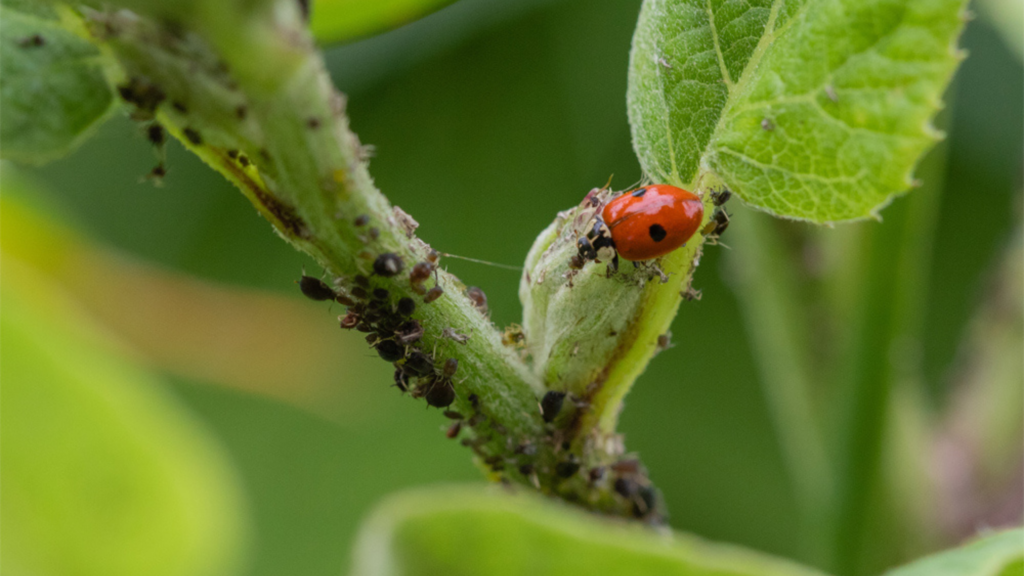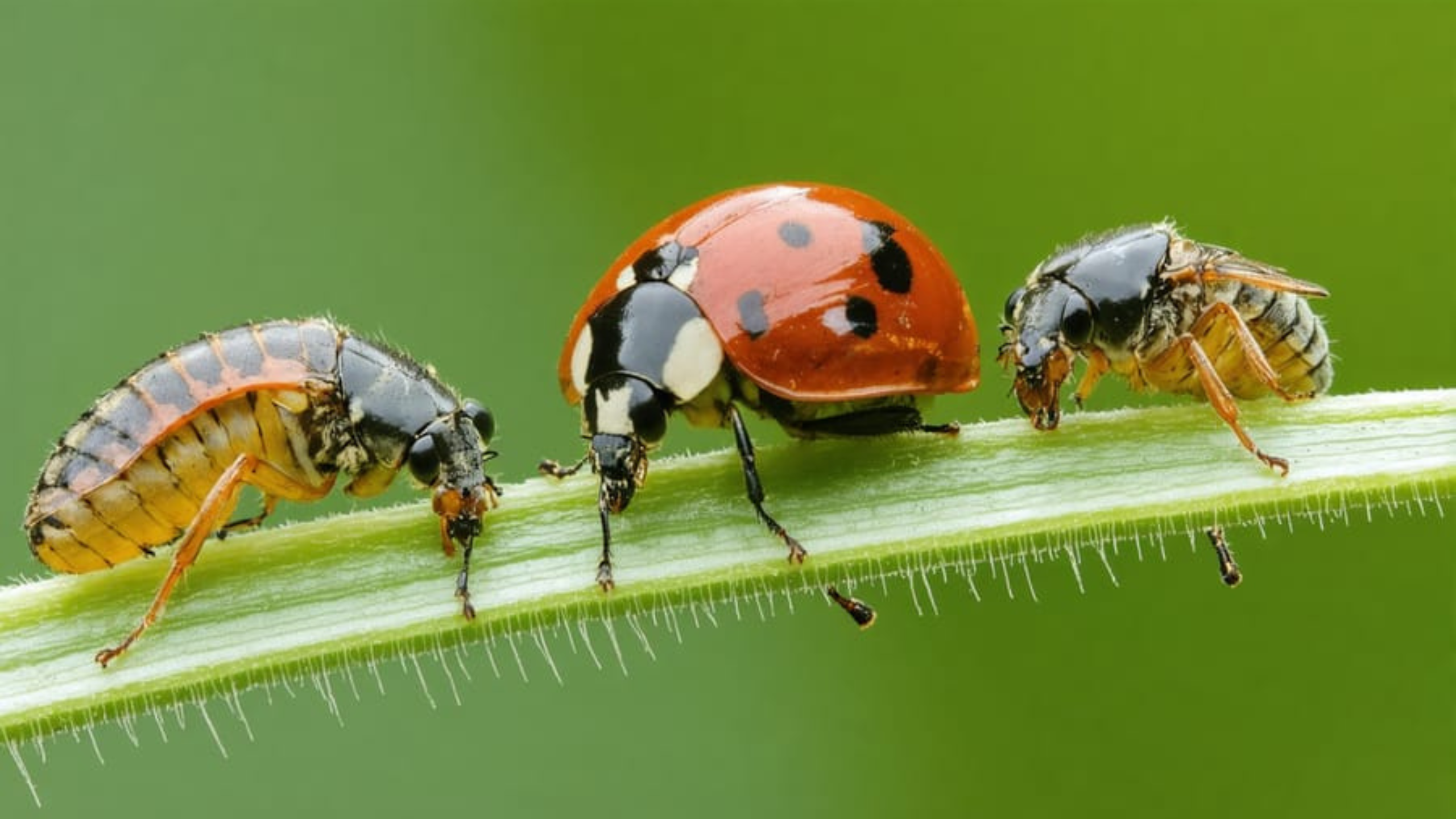In sustainable agriculture, the presence of a diverse range of beneficial insects is crucial for maintaining ecological balance and effective pest control. These tiny champions help farmers manage pests without relying on chemical pesticides, promoting a healthier environment for crops and wildlife alike. This article explores the two main categories of beneficial insects—predators and parasitoids—and highlights their roles in pest management.
1. Predatory Insects
Predatory insects directly feed on pests that harm crops. By controlling pest populations, they play a vital role in protecting the health of agricultural plants. Here are some common predatory insects:
Wasps (Polistes)
These wasps, measuring about 2 cm in length, are effective predators that consume caterpillars and various harmful insects. Their presence can significantly reduce pest numbers in orchards and gardens, helping to keep crops healthy.
Lady Beetles (Coccinellidae)
Known for their bright colors, lady beetles range from 2 to 5 mm in size and are voracious consumers of aphids, which threaten crops like tomatoes and lettuce. They can devour thousands of aphids during their lifetime, making them indispensable allies for gardeners and farmers alike.

Dragonflies (Odonata)
With a wingspan of 7.3 to 8.4 cm, dragonflies are skilled hunters that feed on mosquitoes and other small flying insects. Their predation helps prevent damage to plants, as they keep these pests in check.
Damselflies (Odonata)
Similar to dragonflies, damselflies are effective at controlling mosquito populations and other aquatic pests. Their presence near water bodies can help manage insect numbers both above and below the water surface.
Robber Flies (Asilidae)
These predators, which can measure anywhere from 3 to 40 mm, target flying insects, helping to control pests like mosquitoes and small grasshoppers. Their aggressive hunting behavior makes them effective in reducing pest populations in a variety of environments.
Syrphid Fly Larvae
Ranging from 3 to 45 mm, the larvae of syrphid flies are known for consuming large quantities of aphids and other soft-bodied insects. By feeding on these pests, they significantly reduce infestations in vegetable gardens.
Ground Beetles (Carabidae)
Ground beetles include terrestrial beetles that hunt nocturnal pests such as caterpillars and slugs. They vary in size from 2 to 60 mm, and their predation helps protect crops during critical growth stages.
Tiger Beetles (Cincindelidae)
Known as “tiger beetles,” these fast-moving predators measure from 2 to 60 mm. They are voracious hunters of small insects, contributing to pest control in various agricultural settings.
Earwigs (Dermaptera)
Measuring between 1.4 to 2.3 cm, earwigs are nocturnal hunters that consume aphids, mites, and other small insects. Their diet aids in keeping pest numbers lower, promoting healthier crops.
2. Parasitoid Insects
Unlike predatory insects, parasitoids do not hunt pests directly; instead, they lay their eggs inside or on host pests. When the larvae hatch, they feed on the host, helping to control pest populations from the inside out. Here are some notable parasitoids:
Tachinid Flies (Tachinidae)
These parasitoids, measuring between 4 and 16 mm, target various lepidopteran pests, including caterpillars. By attacking these pests, tachinid flies naturally regulate their populations, aiding farmers in crop protection.
Braconid Wasps (Braconidae)
Ranging from 1 to 30 mm, braconid wasps deposit their eggs inside caterpillars, effectively neutralizing threats to crops like corn and soybeans. Their method of control is highly effective and environmentally friendly.
Ichneumonid Wasps (Ichneumonidae)
Measuring between 3 and 40 mm, ichneumonid wasps attack soft-bodied insects, such as caterpillars and beetle larvae. By preventing the reproduction of these pests, they contribute to a sustainable agricultural ecosystem.
The Importance of Beneficial Insects
Incorporating beneficial insects into agricultural practices is crucial for reducing the need for chemical pesticides and promoting sustainable farming. These insects provide natural pest control, improve pollination, and contribute to soil health.
Strategies to Attract Beneficial Insects
Farmers and gardeners can implement several strategies to attract and retain these beneficial insects on their farms:
- Plant Diverse Crops: A variety of plants can provide habitats and food sources for beneficial insects, enhancing their populations.
- Provide Shelter: Habitats such as hedgerows, flower borders, and insect hotels offer shelter for beneficial insects, encouraging them to thrive.
- Avoid Pesticides: Reducing or eliminating the use of chemical pesticides helps to preserve populations of beneficial insects.
- Encourage Native Plants: Planting native flowers and herbs can attract pollinators and beneficial predators alike, creating a balanced ecosystem.
- Maintain Healthy Soil: Healthy soil fosters strong plant growth, which in turn attracts beneficial insects and keeps pest populations in check.
Conclusion
Beneficial insects are essential allies in sustainable agriculture. By understanding and promoting these insects, farmers can enhance their pest management strategies, improve crop yields, and foster a healthier environment. With their impressive pest control abilities, these tiny heroes play a crucial role in nurturing our agricultural ecosystems. Embracing their presence not only leads to healthier crops but also supports biodiversity, ultimately benefiting us all.


https://t.me/s/officials_pokerdom/3864
https://t.me/s/iGaming_live/4871